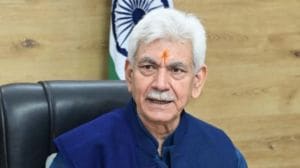Shame and Scandal in the Family
THE riddle of appearance and reality, embedded in the peculiar relationship between deception and credulity, fascinates historians who inves...

THE riddle of appearance and reality, embedded in the peculiar relationship between deception and credulity, fascinates historians who investigate the appearance, but can never be sure of the reality. At the end of a highly engrossing and well-documented historical investigation of this nature, Partha Chatterjee admits that he has been ‘‘left without the truth’’, as suggested by the question-mark in the title of the book. His quarry remained as elusive as ever.
The quarry, or the hero of this ‘narrative history’, is Ramendra Narayan Roy, the second kumar (prince) of the zamindari of Bhawal (now in Bangladesh). He was an object of furious controversies for almost four decades, polarising Bengali society.
It all started with his reported death in Darjeeling in May 1909. The 25-year old profligate kumar, during one of his bouts of womanising, had contracted syphilis. He went to the hill station, accompanied by his recently married wife and her elder brother, hoping to find in its salubrious climate a cure for his venereal ulcers. Within a few days, however, he fell ill and, one evening, he collapsed. An English doctor declared him dead and issued a certificate to that effect.
| A Princely Impostor? The Kumar of Bhawal and the Secret History of Indian Nationalism Partha Chatterjee Permanent Black Price: Rs 595 |
A little over a decade after his death(?), in 1921, a sanyasi appeared in Bhawal and declared himself to be Ramendra Narayan Roy. His version was that he was alive when taken to the cremation ground, and was rescued by some north Indian sadhus, with whom he had spent all these years. While the kumar’s sister, some relatives and a large number of tenants of the estate accepted the sanyasi’s story, vehemently claiming to have discovered signs of identity on his body, his widow and many others who had known the kumar in the past, with equal vehemence denounced the sanyasi as an impostor.
A series of court cases followed — the sanyasi claiming right over his share of the Bhawal property, and the kumar’s widow opposing him. Both sides mustered witnesses and an impressive galaxy of famous lawyers in a legal battle that began from the Dacca (Dhaka) district court, went up to the Calcutta High Court, and was finally decided by the London Privy Council.
At every stage, it was the Bhawal Sanyasi (as he came to be known in popular parlance) who won. But in an ironical twist to the tale, the day after the Privy Council’s favourable judgment reached him in July 1946, he was seized by a stroke and died two days later. The kumar’s widow attributed it to nemesis, reiterating that although she had been defeated in every court of law, she had won in the ultimate court of appeal!
Around this real life story which imitates a fairy tale, Chatterjee has woven a fabulous narrative, interlacing it with intrigues over sharing property in a zamindari family, the popular craze for miracles, contemporary socio-political trends, and wider and complex problems of identity and amnesia among individuals. His sub-textual argument is that in the face of persistent opposition by the British administration (which all along supported the kumar’s widow), the Bhawal sanyasi became a ‘‘popular focus of anti-colonial sentiments’’, which extended to Indian judges and lawyers who gave their verdict in his favour as a mark of growing nationalist self-assertion — a trend which Chatterjee describes as the ‘‘secret history of Indian nationalism’’.
Chatterjee recalls how in the sanyasi’s defence, his lawyers produced the kumar’s past mistresses and cronies who, in the court, certified that he had suffered from syphilis and identified the marks in his private parts, which convinced the Indian judges that he was indeed the second kumar! If these Bengali ‘‘stalwarts among nationalist lawyers’’, and judges imbued with ‘‘nationalist consciousness’’ had to prop up a dubious character (who was either a Bengali zamindar’s lecherous son, or an impostor from north India), as the surrogate symbol for their anti-colonial sentiments, it is a rather sad reflection on the ‘‘secret history of Indian nationalism’’.






- 01
- 02
- 03
- 04
- 05

























